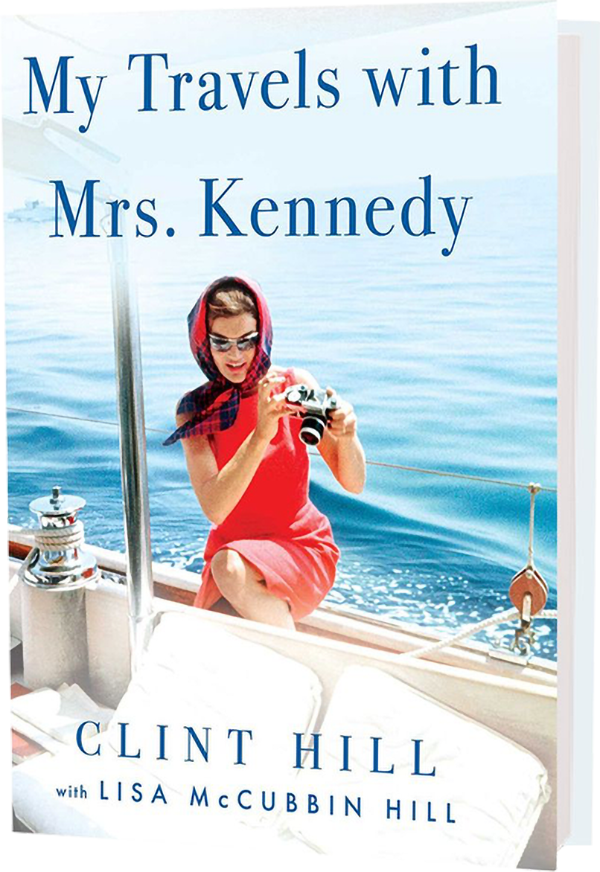
This book features more than two hundred rare and never-before-published photographs, many found in an old trunk in his house.
There are First Ladies and then there are First Ladies. No First Lady can come close to what Jackie Kennedy accomplished. As a First Lady she was admired, respected, and revered. She had many talents, able to influence with her fashion styles, hair, and a public mother/wife. But she also played a much larger role in the Kennedy administration, as a de facto diplomat. Clint Hill had a birds-eye view, and this book helps Americans to understand why this period of history was called the Camelot years.
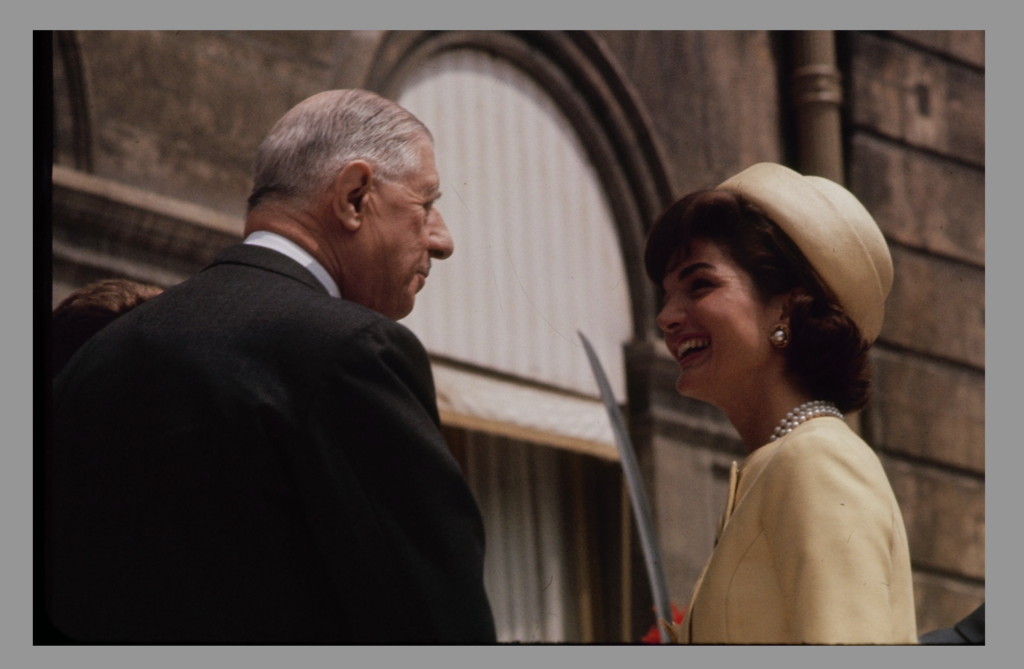
People might not recognize the author, but the photo of him jumping on the Presidential car is engrained in most everyone’s mind. He is the Secret Service Agent that heroically leaped onto the Kennedy car in Dallas after the President was shot.
Hill provides new insight into the intensely private woman he always called “Mrs. Kennedy” and who always called him “Mr. Hill.” For the first time, he reveals the depth of the relationship that developed between them as they traveled around the globe. Now ninety years old, Hill recounts the tender moments, the private laughs, the wild adventures, and the deep affection he shared with one of the world’s most beautiful and iconic women—and these memories are brought vividly to life alongside more than two hundred rare photographs, many of them previously unpublished.
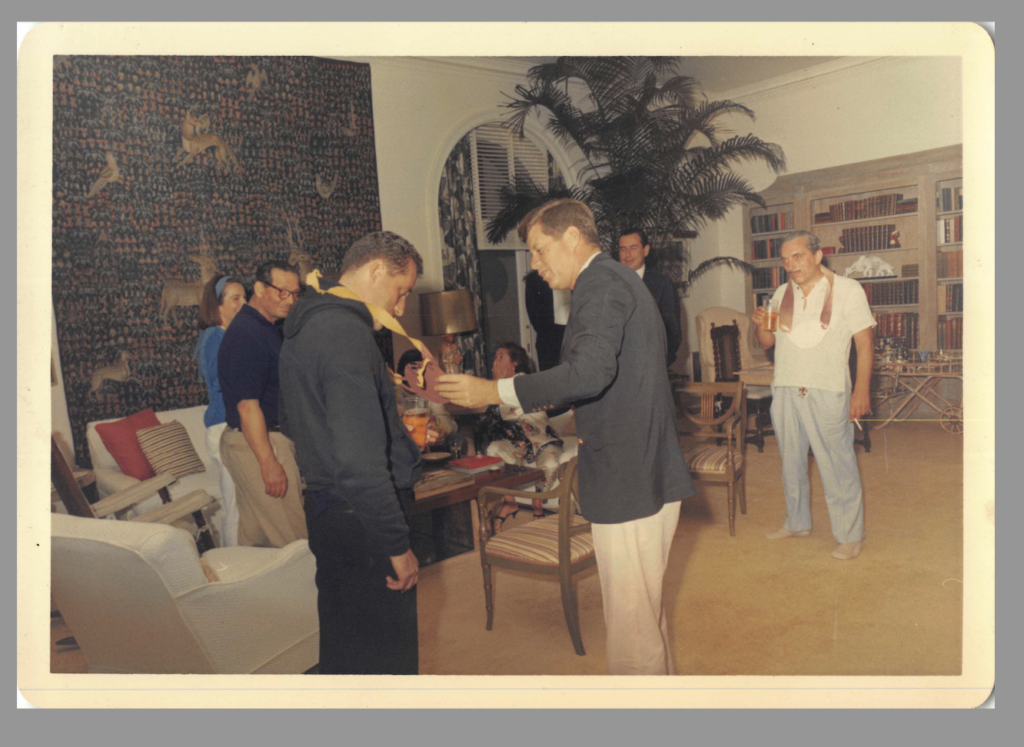
From the very first page readers will be immersed in their world. The saying “a picture is worth a thousand words,” applies to this book. People seeing the photographs with commentary will run a range of emotions from sad, happy, melancholy, to putting a smile on their face.
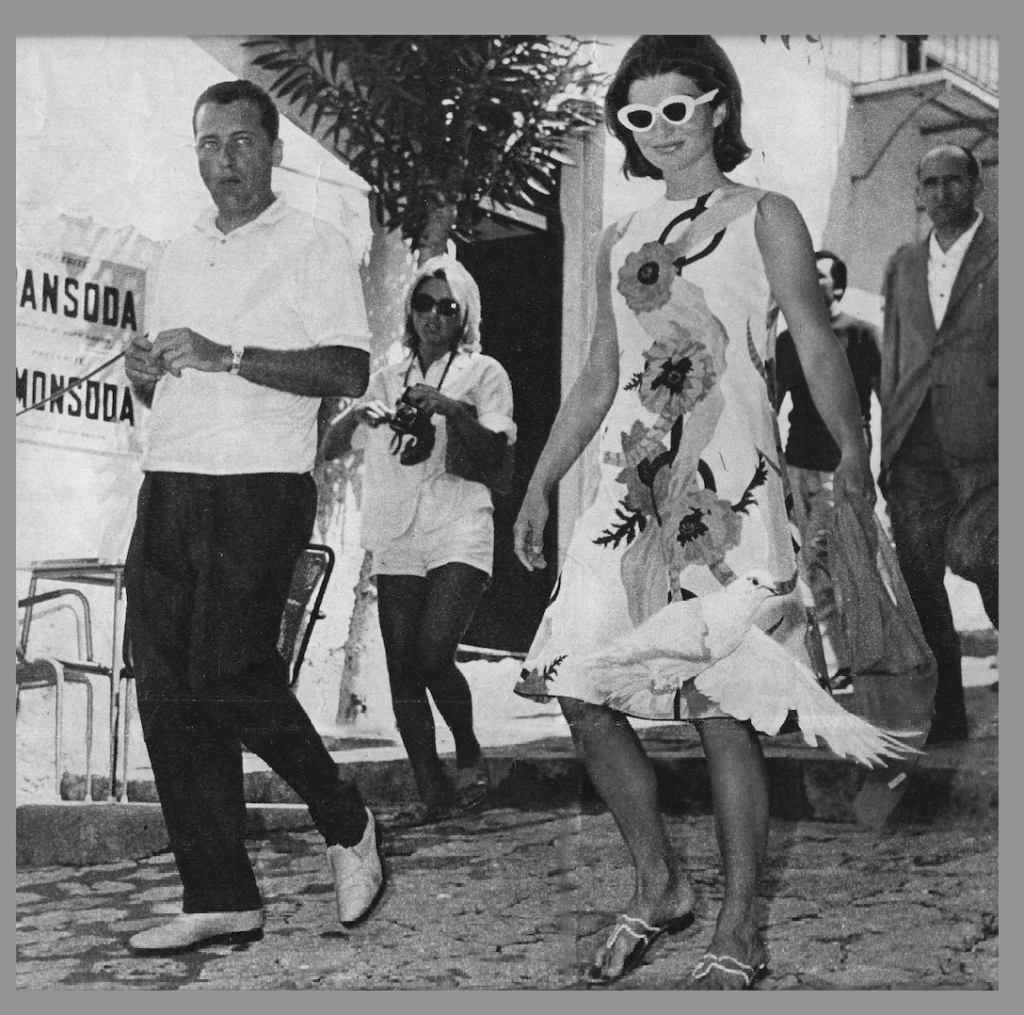
Elise Cooper: How did you come by the trunk?
Clint Hill and Lisa McCubbin: In 2019, Lisa and I discovered the trunk in the garage of my house in Alexandria, Virginia—a house I had owned since 1967, but hadn’t lived in for the previous ten years. We were clearing out the house to get it ready to sell when we came across the trunk. I had completely forgotten it was there and I had no idea what was inside.
EC: How did you come by all those photographs in the book?
CH and LM: To be clear, all these photographs were not found in the trunk. There were many photos in the trunk, including a scrapbook filled with photos from my travels that Mrs. Kennedy made for me as a farewell gift when I left her detail in 1964, but also a lot of mementoes, like the spy camera, and a silk scarf from India. Coming across the photos and mementoes in my basement and within the trunk brought back memories of the trips. While writing the book, my wife and coauthor, Lisa, and I came across many additional photos, from various sources, that helped illustrate the stories from my memories.
EC: What are the top five photographs that are special to you and why?
CH and LM: The picture of the trunk – because it held such wonderful things reminding me of the travels and it was so unique. Unfortunately, it had to be destroyed because it had water damage in the bottom. I’m glad we took a picture of it before we opened it. We’ve noted the page numbers in the book where the photo can be found.
Page 15: Mrs. Kennedy talking with French President De Gaulle – this photo shows how close they were and how easily she was able to communicate with him in French. He was captivated by her and that undoubtedly helped relations between our two countries. This is typical of the relationship she had with most heads of state. She spoke fluent Italian and Spanish too, and she used that on foreign trips. President Kennedy was very proud of her when she spoke to people in their own language – something he couldn’t do.
Page 43: When I held John on the back of the jet boat – showing how it worked. This shows the close relationship I had with the Kennedy children. Mrs. Kennedy always told us, the agents, to treat them like normal children, to not give them special treatment. If they fall, don’t pick them up. She didn’t want them spoiled. But whenever she was with her children, I was there too—those were special times.
Page 44: President Kennedy placing the paper medal around my neck after completing the 50-mile hike. This is probably the most unique memento I have—something no one else has. No one ever knew about the 50-mile hike until I wrote about it. At the time, I wasn’t too pleased about going on an impromptu 50-mile hike with the president’s brother-in-law and best friend, but it turned out to be one of my most treasured memories.
Page 265: We were in the airport in Rome – she’s wanting to buy something for the kids, and she sought my advice. Shows the relationship she and I had that she sought my opinion.
Page 175: Walking with Mrs. Kennedy through the ancient stone streets of Ravello. I had arrived in Italy with my usual Florsheim wingtips, but Mrs. Kennedy convinced me they looked out of place and assisted me in buying those white handmade Italian loafers. This photo also shows how relaxed we were on that trip which was purely a vacation for her. Our relationship had really changed by this point—she trusted me with everything to the point that she didn’t bring any other staff along. I was social secretary, press secretary, as well as Secret Service agent.
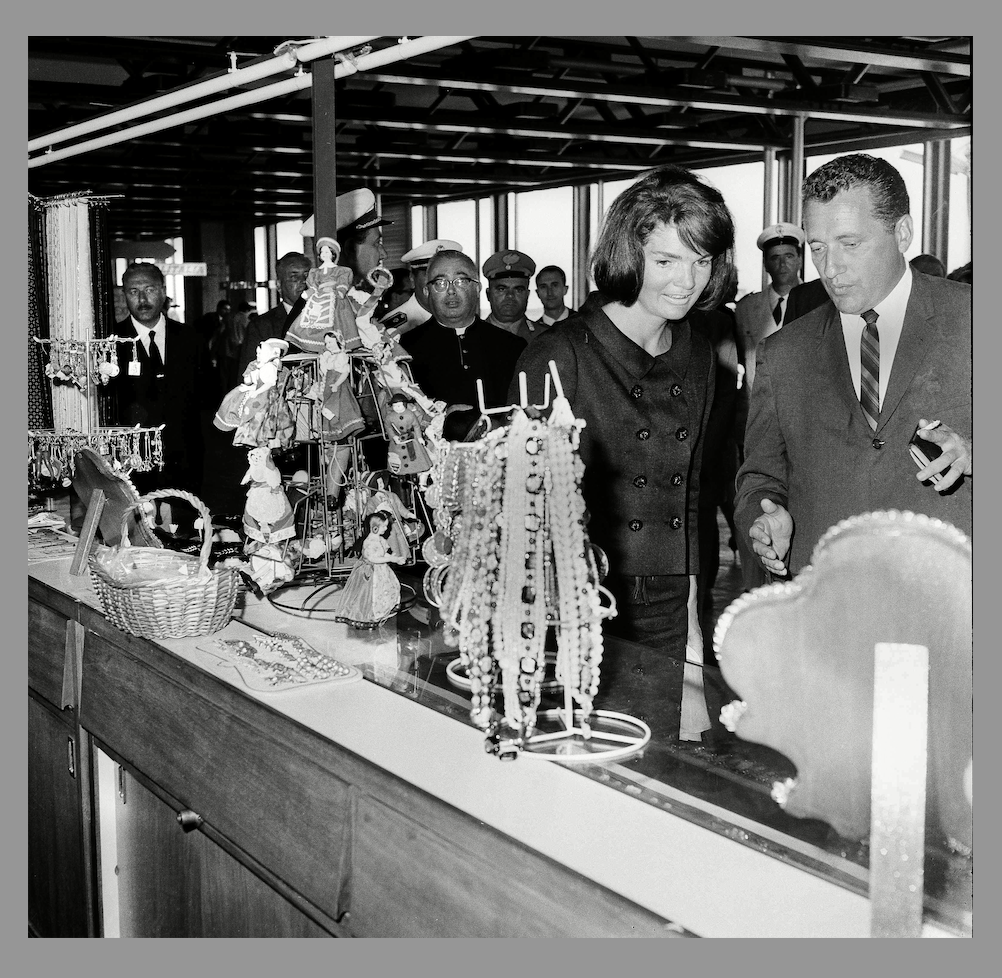
EC: Do you agree that Mrs. Kennedy was not just a First Lady but also a diplomat? Please explain.
CH and LM: Yes, she dealt on a one-on-one basis with all people—from the lowest, downtrodden, to the highest ranking in every country she visited. She sought out opportunities to better the relationship between the U.S. and the countries she visited. I put in this book quote, “Mrs. Kennedy was more effective than any ambassador or diplomatic relations policy that had been before or since, creating goodwill while she was making history, shaping international relations…She proved herself to be, arguably, one of the best ambassadors the United States ever had, to be one of the President’s secret weapons on the international front.”
EC: Why do you think people gravitated, admired, and had their hearts captured by Mrs. Kennedy?
CH and LM: Mostly because of her grace and beauty, her authenticity. She was the real thing. Many people wished they could be like her or be a friend of hers.
EC: Do you feel you are an “interpreter” to history for the American people? Please explain.
CH and LM: No, I don’t believe I am an interpreter to history. I’m just one of many that was given wonderful opportunities to serve my country. I’ve realized the historical significance of what I’ve seen and what I’ve done. It is disappointing and irritating to me when I see how people have made up things that were untrue, whether it be in books, movies, or television series. They call it “dramatic license” but often it’s purely made-up and contains no basis in fact. I’ve seen myself portrayed in movies doing and saying things I never said or did. Yet no one bothered to ask me. It’s important to me to keep the record straight, factual, and honest.
EC: How would you describe the First Lady?
CH and LM: She was educated, well read, astute, curious, fun loving, adventurous, spontaneous, down to earth, elegant, charming, smart, and intuitive. That’s who she is. I don’t have anything more to add—those are all the words I would use to describe her.
EC: What was your relationship with Mrs. Kennedy?
CH and LM: There is this book quote, “A bond based on trust and mutual respect. As time went on, that had just grown stronger and stronger.” That’s what this entire book is about. All the stories and photographs contained within it are the answer to your question. Our relationship changed over time.
EC: Considering that tragedy if you could go back in time would you not want to have been assigned to that detail?
CH and LM: I would want to have been assigned to that detail. The only thing I would have changed would have been the outcome of what had happened. I would be dead, and President Kennedy would be alive.
EC: What do you want Americans to get out of the book?
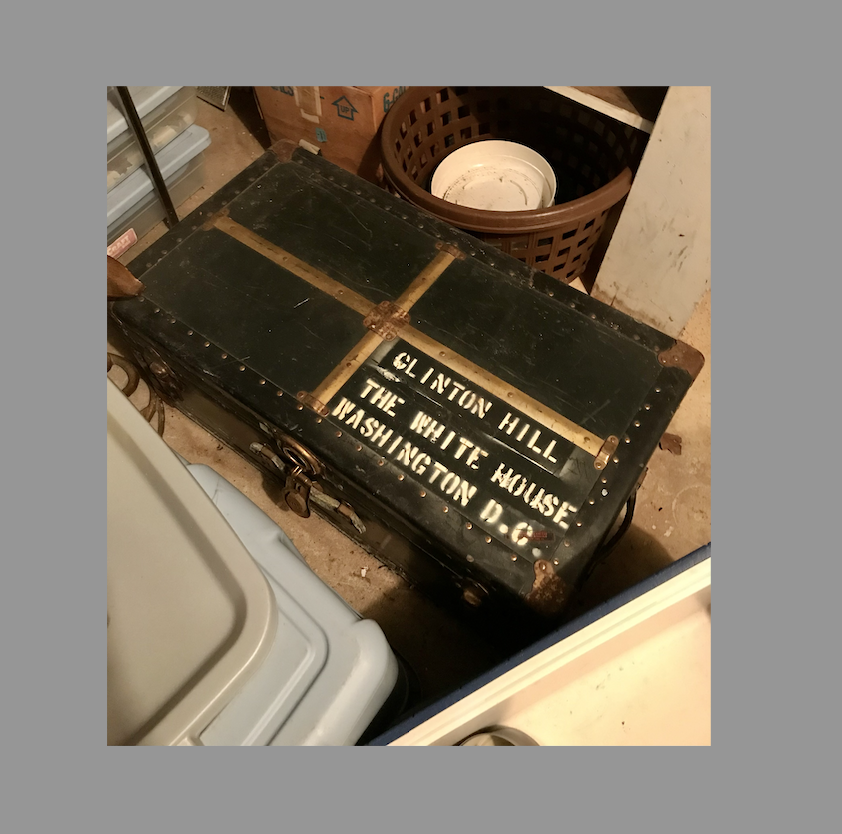
CH and LM: A better understanding of exactly who Jacqueline Kennedy was, what she stood for, and how important she was to all the people of the United States and relations with foreign countries. I think it also shows the special and unique relationship between Mrs. Kennedy and me—it was a different time, and because of limited manpower, one person was required to do the work of many and that meant a much closer relationship between the protector and the protected. It was not political, but very professional.
THANK YOU!!
